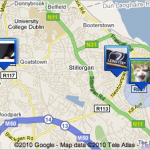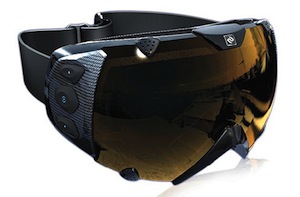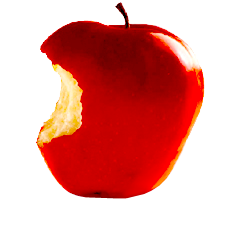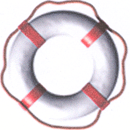Skiing in 2015
I recently went skiing for a week in Austria with a group of friends (blogged nicely by Morgan & Diane). One cool feature of the resort we were at is that the lift pass is just an RFID card you keep anywhere in a pocket on the left side of your body. When you walk through the lift gate, it opens if you have a valid pass. The scans are linked to their servers and you can enter the ID number on your card to pull down data on every lift you took. The end result is an on-demand chart of your elevation over time through each day.
Another cool technology we’ve been playing with is google latitude, which lets you share your phone’s location data with friends. (GPS + cell tower triangulation). It’s a great way to see where your friends are on the hill.
This really got me thinking about what advances in augmented reality technology will bring to the skiing experience.
In 2020 your ski goggles will have a high resolution heads-up display (HUD). The goggles will have a wireless connection to your smart-phone (iPhone 9G?) running your iSki-AgR 2.1 app. The phone’s GPS, compass, accelerometer, and data-link will provide realtime telemetry to your goggle-HUD to display stats such as your altitude, speed and current weather conditions.
The goggles have a small camera in the rim filming everything you look at, and the phone will be processing the images doing basic image recognition correlated with your location. It will know what you are looking at and can overlay the name of the ski run you’re on and help you find the chair lift you’re looking for. It can suggest a run down to the lift with the shortest queue. Locations on the hill can be tagged by other skiiers and will show up on the HUD to warn you of rocks and other dangers.
Since the app has access to your open social network graph, it automatically discovers all of your friends that are skiing with you and also have iSki-AGR running. It will overlay arrows over the terrain to give directions to meet up with your friends at the lodge. It renders little icons over the heads of your companions so you can spot them easily on a busy slope.
When you ski a run the app tracks and remembers your trail and speed. When you ski the same run again you see a red trail of your previous line superimposed over the terrain. The app will keep track of your lines and best run times, and you can even race your own ghost. Later, one of your friends will beat your best time and your group will all get a little audio announcement of the event. When you ski the run again, you’ll be able to see all of your friends best ski lines (each in their own distinctive color), and try and beat their times.
The better ski resorts will have cameras set up on the hill in key locations filming high quality footage. Later, you’ll be able to call up footage of your best jumps (with stats on air time!) fastest runs, and most spectacular wipe outs. You’ll even be able to give a voice command to instantly blog footage of that sweet 360°-iron-cross you just did.
All of the basic technology for this exists today. It’s just a matter of integration and design for many of the components. By 2015 I expect a few more iterations of moore’s law will provide enough power to do the realtime image processing in your smart-phone. Assuming there’s still snow on the slopes, I think skiing in 2015 will be a remarkably different experience than it is today.
And guess what. I googled a bit just as I finished writing all of this and we’re already almost there.










Nice open feel to the blog. Influence of all of that mountain air? Hope this means more blog posts. Nice work. 🙂
Sounds like an awesome MMO with a physical component. Just what the Doctor (literally) ordered for the worlds overweight, underexersized gamers.
If you’d make the grey of your copy slightly darker the added contrast would permit easier reading. The age of one’s retinas may determine the need of this.